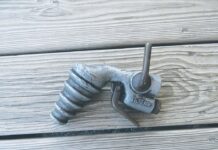For some of us, tillage is a part of our spring planting process every year, but have we ever stopped to question why? Here at soil and water, we encourage growers, both big and small — think about your backyard gardens — to consider not tilling the soil.
When I am considering something new, I always stop to consider the pros and cons first.
Disadvantages
Let’s talk about the disadvantages of tilling our soil. First, by tilling the soil, we are enhancing soil erosion, especially if your field is a slope, no matter how slight. Did you know that it takes 6 inches of topsoil to grow good crops? And it takes 500 years to build 1 inch of topsoil! We cannot afford to lose our soil.
Next is soil moisture loss. Tilled soil becomes highly compacted and does not absorb water properly, causing loss of moisture to the plants and nutrient runoff. Tillage also disrupts the lifecycle of beneficial soil organisms. But how does it affect my pocketbook? Tillage requires more passes over the field, which results in more time and equipment and fuel costs.
Benefits
What are some of the benefits of no-till?
- Less soil erosion: Remember, it takes 6 inches. Let’s save what we have.
- Less soil compaction: Many people think that soil needs to be loosened with tillage for water infiltration and root growth. However, after the first rain, that fresh powdered soil is compacted once again.
- Saves you time: Imagine only having to make one pass across your fields, instead of three or more.
- Lower fuel costs: One pass costs less than three!
- Less soil moisture loss: No-till leaves plant residue on the ground, which can keep the soil moist and protect against evaporation caused by sun and wind.
- Healthier soil: Plant residue decomposes at a natural pace, increasing organic matter and life in and on the soil. To aid in soil health, add cover crops to your crop rotation.
More advantages
No, you do not “profit” from an actual commodity, but you gain added nutrients, organic matter and weed suppression. When you add no-till and cover crops together, you have an army working together to increase soil heath. Within a few years you will see a decrease in the amount of fertilizer and herbicide needed. Once again, you’re adding up the savings.
Let’s imagine we have a wet spring, like we’ve had the last several years. If you only have to make one pass to get your crops into the ground instead of four; we are time and money ahead.
It’s much easier to find one window in the weather to plant, than to find three or more windows and play in the mud. Also, there will be less chance of our seed washing away with the soil or worse yet, being so waterlogged that it rots instead of growing.
Our soil is a valuable resource, and with an open mind, we can use it to its full potential. For more information, contact Carroll Soil and Water Conservation District at 330-627-9852 or visit www.carrollswcd.org.
(Amanda Tubaugh is the district administrator for the Carroll Soil and Water Conservation District.)













